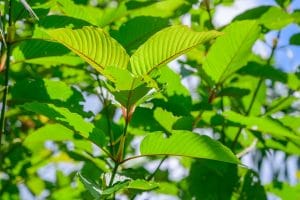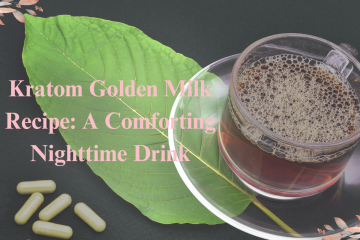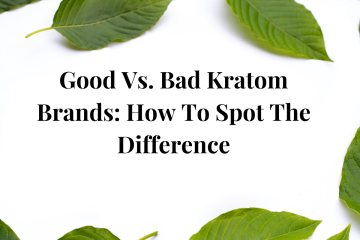If you’re looking to learn about kratom trees, you’ve come to the right place. Although kratom trees may seem like any other ordinary tree, they have an interesting story. Originating from the tropical regions of South Asia, this tree belongs to the same family as the coffee tree. These trees can vary slightly in appearance in different locations, but since they’ve been farmed for thousands of years in Southeast Asia, most Mitragyna speciosa trees are very similar in vein color, leaf shape, and size.
If you’re thinking about growing your own kratom, or you’re simply wondering “what is kratom” in a botanical sense, keep reading to learn all about kratom trees and the history of kratom.
What is Kratom?
The definition of kratom (or Mitragyna Speciosa) is a tropical evergreen tree indigenous to a number of countries in Southeast Asia. Mitragyna speciosa is a member of Rubiaceae, a family of flowering plants that include gardenias and the coffee plant. Other names for kratom include:
- Kakuam
- Ketum
- Ithang
- Thom
- Biak
Kratom has also been called many other names, such as mambog, gra-tom, kutum, katawn, mitragyne, biak-biak and mabog.
While Mitragyna speciosa is an evergreen tree, it sheds its leaves constantly during the dry season and regrows them in the rainy season. Many kratom farmers view the best time of year to harvest the kratom leaves as during the dry season—when the alkaloids in the kratom leaves (such as 7-hydroxymitragynine) reach peak levels of concentration.
The History of Kratom
Kratom was thought to be formally discovered by Dutch botanist Pieter Willem Korthals, the official botanist of the Dutch East India service from 1831-1836. However, historical evidence reveals that kratom has been used in as herbal alternative by native tribes for thousands of years.
Reportedly in Southeast Asia, workers typically chewed kratom leaves or made kratom tea, which they reported to have helped them with overall wellness. When Korthals encountered the plant, he felt like kratom leaves resembled a bishop’s hat (miter), and that’s where kratom’s scientific name comes from.
The first reported use of kratom in the scientific literature dates back to 1836 when it was noted that Malays used it as a substitute for opium. In addition, other observers documented other traditional uses of kratom leaves, including as a wound poultice, for fever, and for reducing withdrawal symptoms from opium. In the United States, however, such uses are not approved by the FDA, and there are no known health benefits of kratom. Clinical research on kratom is highly lacking, and vendors that sell kratom are restricted by the FDA in what claims we can make and how we cite scientific studies.
History of Kratom in the US
Because there is little data surrounding the historical popularity of kratom in America, it’s hard to know exactly when kratom “became a thing” in the US. Now, most kratom sellers and distributors conduct their businesses online, but it is unclear what year stores began selling kratom in the US.
There is no evidence that indicates anyone offered kratom for sale in Western World until the 1980s. The introduction of kratom to the US is partly linked to one of the first American kratom pioneers—Terrance Mckenna, an ethnobotanist. In the 1980s, Mckenna apparently traveled to Southeast Asia, where he collected kratom samples and grew kratom trees at his ethnobotanical nursery in Hawaii. It is unclear how many people knew about kratom in the US in the 1980s.
In the 1990s there is more evidence of how kratom began to enter the United States, but kratom remained largely unknown. A few smokeshops or herbal stores may have been the only places offering kratom for sale.
Kratom finally began to become popular in the United States between 2000-2010. Kratom arose as an herbal alternative in kratom communities, although both the DEA and FDA designate kratom as an unregulated botanical with no approved medical use, as clinical studies on kratom are lacking.
Is Kratom Legal? A Brief History
The FDA’s first active attempts to get kratom off the market occurred before more recent scientific kratom studies that would provide insights into kratom’s risks and potential. In 2014, the F.D.A. launched a “war on kratom” by attempting to cut off its import supplies, claiming that kratom could produce “psychotic symptoms, such as delusions and hallucinations” and that it could “lead to addiction.”
Since little research existed on kratom then, it’s interesting to find that the FDA’s claims would go on to be challenged by some research evidence, such as a study that indicates that kratom may have antipsychotic effects, although the study has not been confirmed by the FDA, and its indication of these effects is not conclusive.
In 2016, the DEA planned to ban kratom in the US as a Schedule I drug but reversed the decision at least partly due to backlash from the public and some scientists.
The FDA maintains that kratom has a high potential for abuse, and although some recent studies, kratom user accounts, and some medical experts contradict this information, there is not sufficient evidence to fully understand kratom’s abuse potential for the population at large. Hence, the kratom debate wages on, and no one can claim for certain if kratom is safe or beneficial.
Therefore, kratom is currently designated as an unregulated herb, and although the FDA advises against buying kratom, it is federally legal for adults to purchase and use in most states of the United States (kratom laws are handled on a state level). That being said, vendors, websites, and other places that sell kratom are not allowed to cite any medical claims regarding kratom—if they violate the laws, they risk charges and federal forfeiture (similar to what happened to Kratom Crazy).
Where Does Kratom Come From?
Kratom grows in countries such as Indonesia, Thailand, Malaysia, Myanmar, the Phillippines, Laos, Vietnam, The Sunda Isles, and Papua New Guinea. There are six other plant species of Mitragyna, almost all of which have been used in traditional medicine for millennia.
Although it is becoming widely popular all over the world, kratom lacks proper quality clinical research. It is a relatively controversial botanical in the US with no approved health uses.
Most of the information on Kratom has been gathered from Malaysia, as Malaysian farmers have been familiar with the tree for centuries. Authorities in Thailand had attempted to eradicate kratom for decades, causing considerable damage to kratom’s growth and distribution.
Recently, in August 2021, Thailand legalized kratom, approving a grant of 19M baht to fund Kasetsart University’s research project, in which chemical compounds in kratom will be studied to examine kratom for any potential in addiction treatment (something which the FDA does not support).
In Indonesia, Mount Kinabulu is popular in the kratom community for growing Indonesian Kratom and exporting it worldwide. Communities on other Indonesian islands, such as the Borneo Island, also farm kratom for a living. However, strains such as Vietnam or Bali Kratom do not necessarily originate from Vietnam or Bali. Kratom strain names refer to specific blends of kratom and their drying processes, but there is a lot of misinformation on them.
So, What is a Kratom Tree?
The kratom tree can grow up to 10-100 feet tall and 15 feet wide. Its leaves can grow as tall as 7 inches, and the width of its leaves can grow up to 4 inches. In physical appearance, it has a straight trunk and a smooth grey bark. The kratom tree grows all year round and is known to be arborescent (tree-shaped). It is an evergreen tree that does not lose its leaves in the winters and grows all year round in South Asia’s tropical climate.
In wet seasons, the tree will produce more leaves, and in dry seasons, the number of leaves that drop will increase. The shape of the leaves is ovate-acuminate, and they can have a glossy or waxy appearance. The color of the leaves ranges from light to dark green. In the flowering season, the tree produces yellow clusters of 120 florets or so. After the seeds are released from the plant, they begin to degrade quickly, which is why the germination rate of the seeds starts to decrease quickly.
How to Grow a Kratom Tree
Growing a kratom tree is not easy; however, it’s not impossible to grow your own kratom tree. It’s important to remember that the propagation process for kratom seeds is highly demanding, and very few seeds actually grow into trees.
That is why the first thing to do is to make sure you plant several seeds. For the propagation to be successful, you also have to make sure that the seeds are fresh; otherwise, they will lose most of their potential. The soil should be extremely fertile and rich, and a precise amount of water must be supplied—not too little and not too much. Furthermore, temperatures between 70-90 degrees Fahrenheit and humid conditions can speed up the tree’s growth and allow it to thrive.
Next, it is essential to make sure that you save your tree from different types of plant diseases and fungi, and the best way to do this is to put your kratom cutting in a moistened container and seal it with a plastic bag. Keep the bag away from sunlight until the roots of the cutting begin to show. Finally, remove the bag and expose the plant to sunlight once you are sure the roots have started to grow. A well-fed tree can grow up to 20 feet in the first two years.
Kratom in Indonesia
Currently, 95% of the world’s legal supply of kratom comes from Indonesia, and due to its enormous demand, it is a thriving industry. This is because Indonesia is the only country with kratom trees, as well as the legal means to export that kratom.
However, some legislation processes are going through in Indonesia that may result in a kratom export ban by 2024. It is impossible to know if this will happen because many communities like the American Kratom Association are making efforts to negotiate with the government of Indonesia to prevent such laws from being passed.
Where to Buy Good Quality Kratom?
In case you don’t want to grow your own kratom tree, you might prefer to find where to buy the best quality kratom from!
When you buy kratom online, if you want to find the freshest kratom for sale, look for places like Buy Kratom Bulk USA, which sources their kratom directly from a country where it is legal to grow kratom and export it. We source fresh kratom directly from our business partners, who are farmers in Southeast Asia.
Since we are very particular about the quality, purity, and authenticity of our kratom capsules and powder, we have earned a large customer base that is loyal to us.
Updating Our Kratom Blog
Our kratom blogs section has a lot of information for you to read, and we are currently undergoing a process of revision to add better sources and information.
In our kratom blog, you can find a number of informative articles on different kratom strains, the legal status of kratom in the US States, and more. If you are new to kratom, you can find useful blogs such as kratom vendor reviews, and where is the best place to buy kratom.






